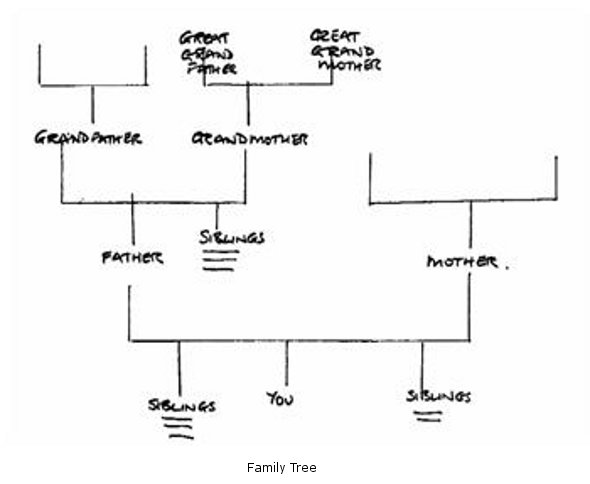Journal Volume 3 2000
Searching For Your Ancestors
By Pamela Bradley
Introduction
I have a young nephew, who says to me, “Why do you bother with all those DEAD people?”
I have yet to convince him that the people who walked down our streets, and farmed our fields before us, are of vital interest. We are all closely linked with the past - our personal building blocks are the genes of our ancestors.
Many of us are more closely related to each other than you may realise. Perhaps you share some of the genes of the girl sitting opposite to you in the DART or the boy at the supermarket checkout.
Once you start moving backwards in time among your ancestors the number of your past relations increases amazingly. You have two parents, four grandparents, eight grandparents, and so on. But have you considered that by the time you list your ancestors of the 1700s, there will be about 250 of them? I say “about”, because of course some of them have probably intermarried, reducing the number.
In my own family research I have gone back along one line for thirteen generations, to Edmund Devenish, a Dubliner who lived 1530-1578. What a triumph to find him! - until I remind myself that he is one of 8192 possible ancestors at that level of time. You think that your ancestor came over with Strongbow, or that you are descended from Brian Boru? Yes, but don't forget that the potential number of ancestors so far back in time, runs to several million. Of course in reality repeated intermarriages mean that the number will have been considerably reduced, but is still large enough to indicate that you may well share ancestral genes with that crotchety old man next door.
There are various systems for recording your family pedigree – the pie chart, the horizontal chart and the family tree.
Pie Chart
Here you put yourself in the centre, and divide the concentric circles for earlier generations, this is visually clear, but I think it has the disadvantage of omitting siblings.

Horizontal Chart
This is a system much favoured by Americans and Australians, and computer software is available to provide this framework. You put yourself on the left of the page and increasing numbers of forbears towards the right.

Family Tree
I prefer the more old fashioned system of the family tree, with you at the bottom of the page, and generations of ancestors soaring into the upper distance. This form allows for brothers and sisters to be slotted in, and if a particular line runs off the top, a further page may be allotted to this branch. It is customary to place males on the left and females on the right of each marital conjunction on the page.

Where do you start the search for your Irish ancestors?

